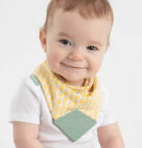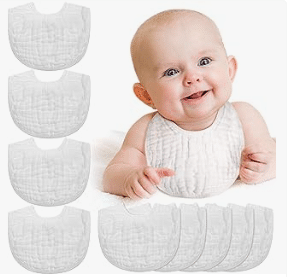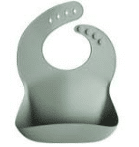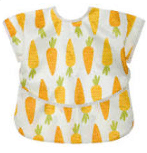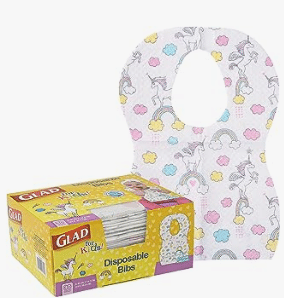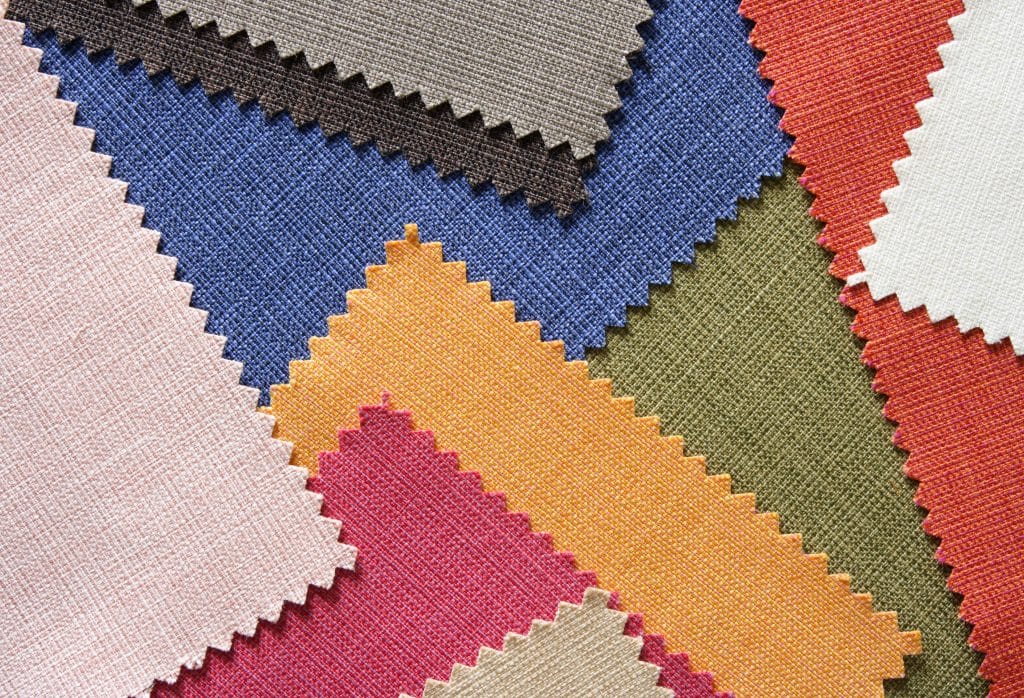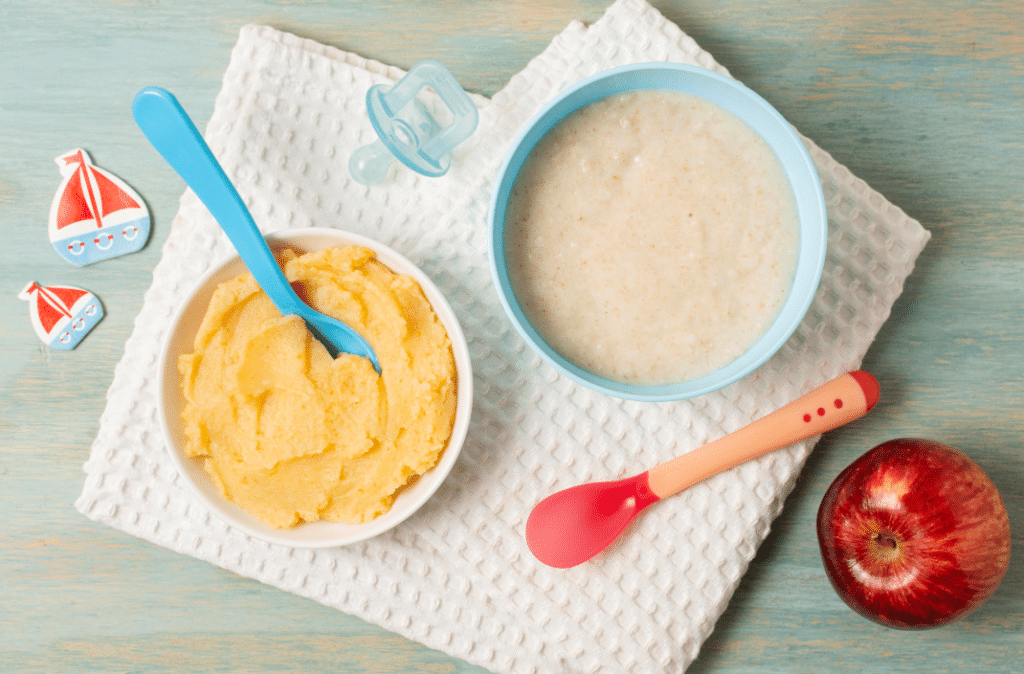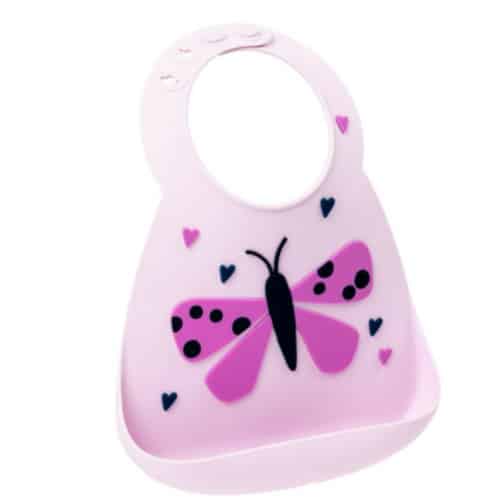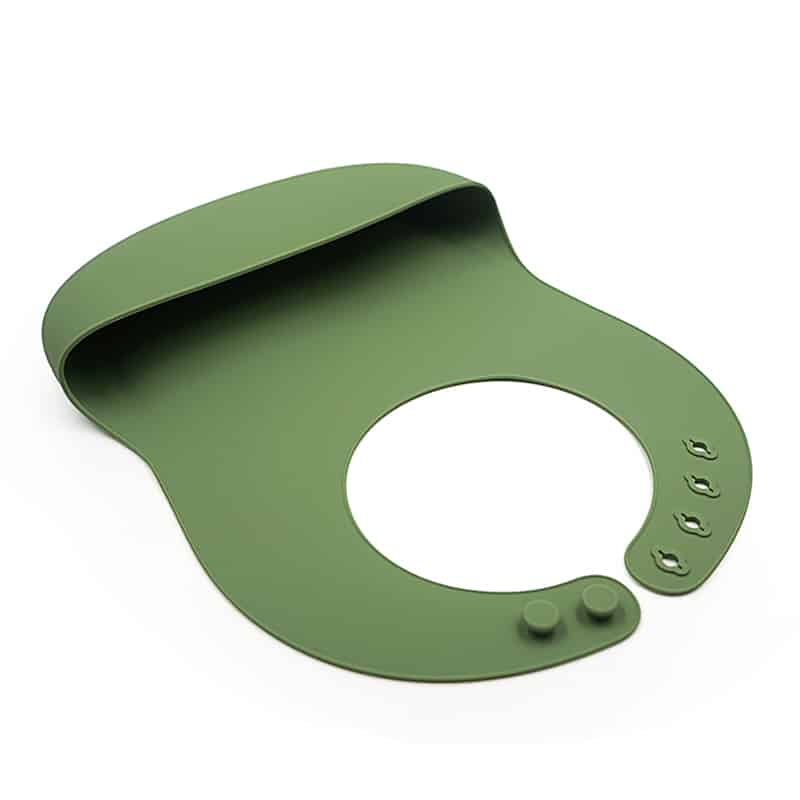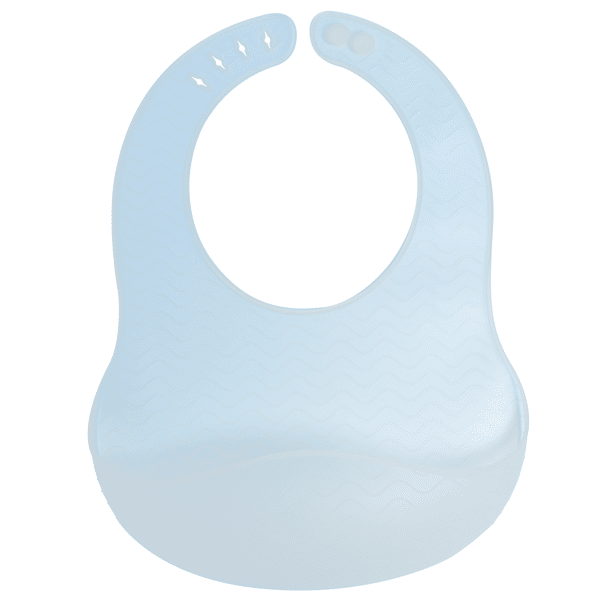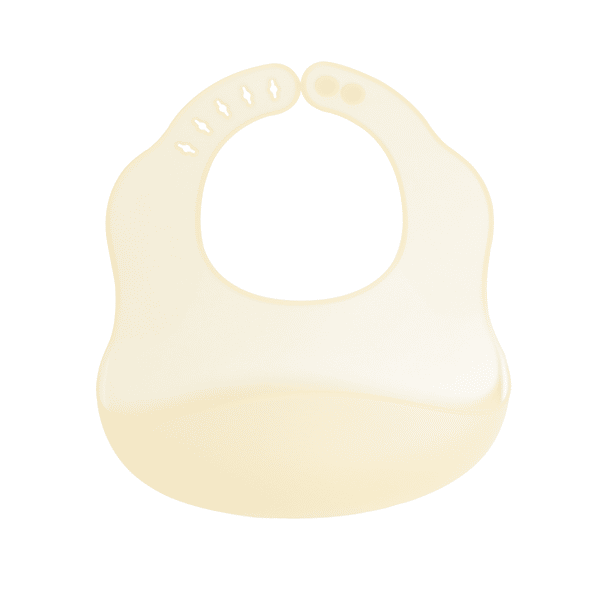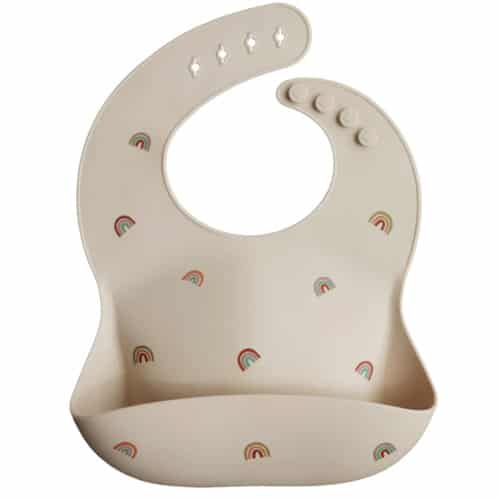What is the Best Material for Bibs?
What are baby bibs?
Babies are not only cute but very messy! Comes in baby bibs that help keep dribbled milk from breastfeeding or formula off your kid’s clothing during feeding and helps sop up the inevitable spit-up that comes after, thus maintaining a standard of cleanliness.
Baby bibs (also sometimes called dribble bibs) are items that parents use nearly constantly when babies are teething. Infants also wear them during meal times and when they have a bottle to catch and soak up spills to prevent their clothes from getting (and staying) wet.
A baby bib is a garment, paper, or other material your tot wears from the neck and covers the chest to protect clothing and delicate skin from foods or drinks that accidentally spill during meals. A bib not only has to be worn when feeding but is also used for infants when they drool, which happens a lot when they are teething.
A perfect baby bib should be absorbent, fit comfortably on your baby and be able to withstand constant washing. Baby bibs will help you relieve the stress of changing your tot, especially if they are the ‘happy spitters.’ A baby bib will also help keep stains off your sunshine’s clothes.
Your baby can start wearing their bibs from the time they turn 1-2 weeks, and yes, you can not do without a baby bib. It is one of the essential supplies for raising your little one.
And while they’re oh-so-practical, bibs are also becoming popular baby fashion pieces. Moms everywhere are using adorable baby bibs as a decorative part of their child’s outfit for the day (or hour!), so they look cute in every way – even while drooling excessively.
Type of baby bibs:
First, let’s start off with outlining the various types of bibs and their primary purpose. You’ll likely work your way through at least a couple of types of these bibs with your baby as they get older.
1. Newborn Bibs
Newborn bibs are designed specifically for babies under 6 months in age. They are extra small in size and designed to fit around a newborn’s small neck. Typically they are made with soft, extra-absorbent fabric. They’re designed for soaking up spit-up or catching any milk/formula that may spill out during a bottle or breastfeeding session.
2. Teething Or Drooling Bibs
Teething bibs are designed exactly for what they sound like they were designed for catching drool when a baby is teething. Any parent who has had a teething baby knows that teething can mean a constant stream of drool out of baby’s mouth and onto their clothes. These bibs are designed to help keep baby dry and comfortable by catching and absorbing all of that drool.
3. Feeding Bibs
As the baby gets older and moves from milk/formula on to eating solids, feeding bibs come into play. These come in a variety of styles, but instead of being soft and absorbent, they are typically waterproof or water-resistant and made to stand up to stains and all of the mess that comes with the introduction of solid food. A very common option is silicone-based bibs because they are stain-resistant and super easy to clean.
4. Smock Bibs
Not everyone uses smock bibs, but they sure can help with keeping baby clean during feeding time. Smock bibs are bibs available in short or long-sleeved options that are designed to cover baby’s upper half. They can be used for mealtimes and also for messy activities like painting. They are water resistant and often designed to be thrown into the washer for an easy clean-up.
5. Disposable Bibs
While they may not be practical for everyday use, they can come in handy if you forget one while you’re on vacation or are attending an event where you want to be able to throw away anything that is messy. They are especially helpful when you know you will not be able to get home and clean or spot-treat the material for several hours or days.
6. Bandana Bib
Bandana bibs are a stylish solution to your teething baby’s drooling. Teething babies can drool a lot. Keep your precious baby dry, comfortable and compliment their clothing with bandana bibs.
What is the best material for baby bibs?
Bibs are traditionally made of cloth, and they are secured around the neck with snaps, buttons or velcro. Fabrics tend to be comfortable and are conveniently machine-washable.
100% Cotton
100% cotton is probably the most popular option for DIY baby bibs! It’s comfortable, soft, absorbent and machine-washable. Also, cotton fabrics have good strength and retain their color even with repeated washings. This is great as bibs undergo so many washings and you also don’t want your bib color and print to fade over time.
Flannel
Flannel is a soft, medium-weight fabric that has a fuzzy finish on one or both sides. The “fuzziness” of flannel is created by brushing a metal brush over the fabric to lift some of the fibers up to create an even softer feel.
Flannel fabrics are made with either cotton, cotton-blend, wool, or synthetics. When choosing a flannel for bibs, go for the ones that are 100% cotton. I would stay away from anything with wool, especially if you want to wash your bibs in a hot or warm cycle. Wool shrinks like crazy in hot water! It’s a very cozy fabric that is comfortable and warm. This makes flannel bibs perfect for winters and cold weather.
Jersey Knits
Another good fabric for baby bibs is Jersey Knits. Jersey Knits are soft, durable in the machine, and don’t wrinkle easily because seriously, who has time to iron a bib?
Also, Jersey knits retain color well which is great for repeated washings. Additionally, they tend to be thicker than other types of knits. This results in a sturdier bib that retains its shape better when worn.
When picking out Jersey knit fabrics, try to choose a one that has a high percentage of cotton (90% or more) as this will make it more absorbent as well.
A side note: if you’ve never worked with knits before, they take a little getting used to in sewing. Also, different knits have different elasticity so you’ll have to adjust your sewing to each one accordingly. But don’t be deterred as it really isn’t that hard!
There are also Synthetic Materials bibs:
Plastic bibs
Let’s take a look at why parents might choose a plastic bib over a traditional cloth bib.
Parents truly love how easy plastic bibs are to clean; simply wipe, rinse and they are ready for the next meal. Plastic bibs are available in two styles; standard plain plastic bibs and plastic bibs with a bottom pocket. These pockets help catch any food and spills from landing on your little one’s lap and the nice clean floor.
These types of bibs give you peace of mind knowing that your baby will be able to chow down without making a mess.
Plastic bibs are known for causing irritation along a baby’s neck resulting in a rash. This irritation can cause your little one to make an unnecessary mess trying to take off the bib.
Before purchasing a plastic bib it is important to know the material used to make the bib. Babies have very sensitive skin or may be allergic to different types of plastic material.
PU bibs, A waterproof PU bib is a necessary accessory for babies and small children at mealtime, as it protects the clothes from getting dirty. Choose between short or long bibs with ties, so that it always fits perfectly around the neck, without the little ones being able to pull it off themselves. The bib blouse is ideal when the child has to eat by himself or do dirty creative expressions. The bib blouse is smart and functional with a Velcro closure at the neck. This type of bib is absolutely perfect for both eating, baking, cooking, or playing and creative activities with paint. All bibs on this page are made of waterproof material. In most cases, it is enough to rinse the bib thoroughly under the tap or wipe it with a damp cloth.
Further Reading:
Silicone vs Plastic Baby Spoons: Which is Best for Your Baby?
Silicone Bibs
Silicone bibs are soft, flexible, heat-resistant, cold-resistant, stain-resistant, and waterproof, making them easy to clean. These bibs are easy to secure in place with fasteners, and they feature a trough-like shape at the bottom to catch any food your baby accidentally drops, preventing a mess. The easy-to-wipe silicone is also dishwasher-proof which reduces clean-up time.
silicone infant bib can be BPA-free, lead-free, and PVC-free.
Benefits Of Food Grade Silicone Bibs
Hypoallergenic properties: Silicone is a hypoallergenic material, making it less likely to cause skin irritation or allergies in your baby.
Easy to Clean
Silicone bibs are incredibly easy to clean, which is one of the biggest advantages over cloth bibs. Cloth bibs can be difficult to get clean and often require soaking and multiple washes to remove stubborn stains. On the other hand, silicone bibs can be quickly wiped down with a damp cloth or thrown in the dishwasher. Plus, silicone bibs are waterproof, so you don’t have to worry about them getting soaked through and causing irritation or discomfort for your little one. Silicone bibs can be wiped or rinsed clean, and some are even dishwasher-safe(Waterproof Material For Bibs), making them a convenient option for busy parents.
Durable and Long-lasting
Silicone bibs are also incredibly durable and long-lasting. Unlike cloth bibs, which can wear out quickly and become stained and faded over time, silicone bibs are made to last. They are resistant to stains, odors, and damage from food, and they won’t shrink or fade in the wash. Plus, many silicone bibs are adjustable, so they can grow with your child and be used for several years.
Comfortable and Safe
Silicone bibs are not only easy to clean and durable, but they are also comfortable and safe for your little one to wear. Unlike cloth bibs, which can be scratchy and irritating, silicone bibs are soft and flexible. They won’t chafe or rub against your baby’s skin, and they won’t cause any allergic reactions. Additionally, silicone bibs don’t contain any harmful chemicals that can leach into your baby’s food, making them a safer choice overall.
Common Styles
How to choose the right baby bibs:
Food Grade Silicone Vs. Other Bib Materials
When comparing food-grade silicone to other bib materials, it’s clear that silicone offers unique advantages:
Cloth materials: While cloth bibs are soft and comfortable, they can stain easily and may require frequent laundering. In contrast, silicone bibs are easy to clean and more resistant to staining.
Synthetic materials: Although synthetic bibs can provide extra protection against spills, they may not be as comfortable or hypoallergenic as silicone bibs.
To ensure the safety and quality of your silicone bibs:
Choose high-quality silicone: Look for bibs made from 100% food-grade silicone, which is safe for contact with food and your baby’s skin. Learn More about Platinum Silicone Rubber
Check for certifications: Look for bibs that have FDA or LFGB certifications, ensuring that they meet strict safety standards.
Examine the bibs: Check for any signs of poor quality, such as uneven edges, thin spots, or strong odors. High-quality silicone bibs should be free of these issues.
Tips For Using Food-Grade Silicone Bibs
Proper timing for introducing silicone bibs: Wait until your baby has good head and neck control before using silicone bibs, as they can be a bit heavier than cloth bibs. This usually occurs around three months of age.
Adjusting the bib as your baby grows: Most silicone bibs come with adjustable closures, such as snaps or Velcro, allowing you to achieve a comfortable and secure fit as your baby grows.
Cleaning and maintenance tips: Clean silicone bibs regularly with mild soap and water, and allow them to air dry. To prevent the growth of mold or mildew, make sure the bib is completely dry before storing it.
Using silicone bibs during mealtime and other activities: As your baby starts eating solid foods, silicone bibs can be especially helpful for catching spills and messes. The built-in crumb catcher in some silicone feeding bibs can make mealtime cleanup a breeze.
Additionally, consider using silicone bibs during teething, when your baby may drool more than usual. Silicone bibs can also be useful during messy play activities, such as finger painting or sensory play, to help protect your baby’s clothes.
In summary
Choosing the right bib material for your baby is crucial for ensuring their comfort and safety. Food-grade silicone bibs offer numerous benefits, including hypoallergenic properties, easy cleaning, and durability. By understanding the different types of bib materials and the advantages of food-grade silicone, you can make an informed decision on whether silicone bibs are the best choice for your baby. With the right bib, you can ensure comfort, protection, and ease of use during those precious early months.
Printing a logo or pattern on silicone baby bibs is a great way to give your brand a professional look and feel. With the right tools and techniques, you can easily print your logo or pattern on to silicone baby bibs with high-quality results. We hope that our guide has helped you understand how to print a logo or pattern on silicone baby bibs so that you can create stunning products for your business.
If you need:
When you are looking to expand your product offerings. Custom Silicone baby bibs with Company Logos for Your Own Business. Elevate Your Business with Custom Company Logo Silicone Baby Bibs as Promotional Gifts. Connect with Jution Silicone Today to Enhance Your Brand’s Visibility with Custom Silicone baby bibs.
Related Blog
-
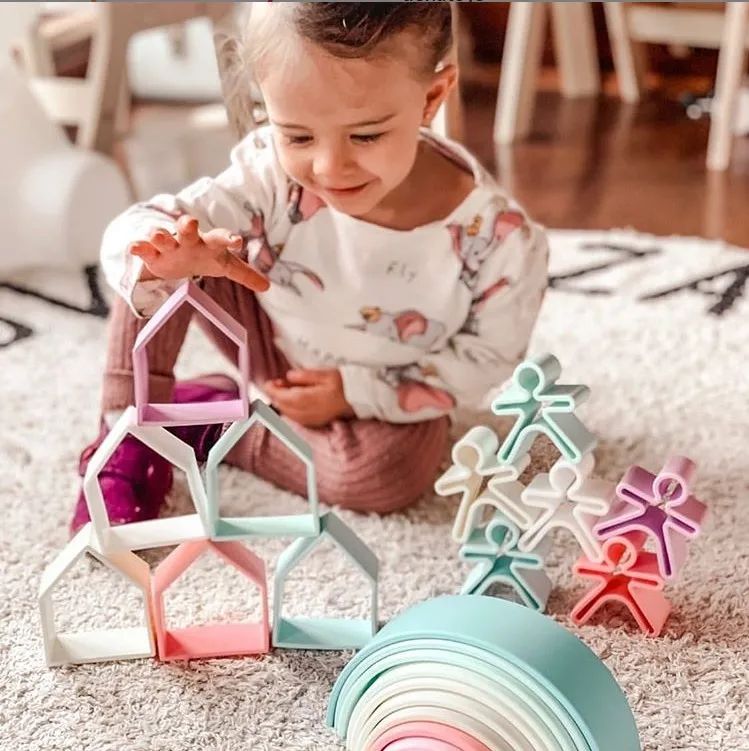
The benefits of playing with silicone toys for babies
The benefits of playing with silicone toys for babies Baby silicone toy is a toy made of silicone material, specially designed for young children. Silica gel is a kind of synthetic rubber, belongs to organic silica gel, with high temperature resistance, cold resistance, non-toxic and harmless, insulation and chemical inertness high characteristics. These characteristics make silicone…
-
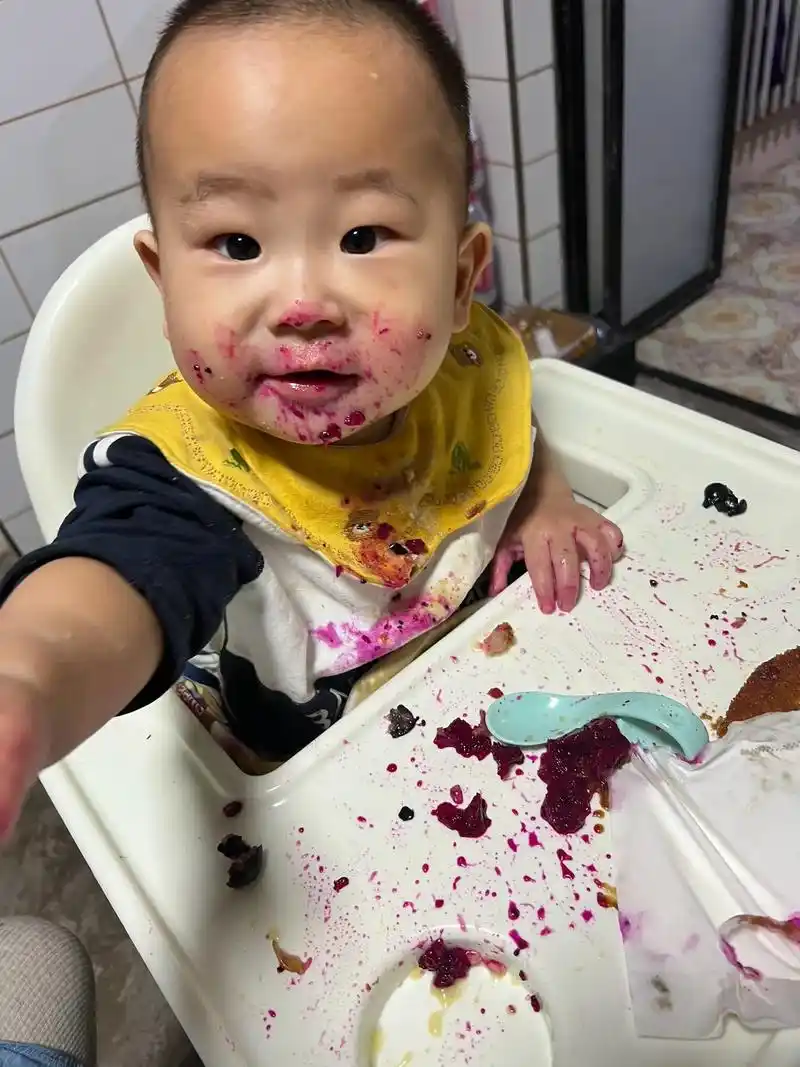
What tools can we choose to reduce the chance that our baby will mess up his food
What tools can we choose to reduce the chance that our baby will mess up his food What is the phenomenon when children eat very disorderly Eating is a top priority in a family’s daily life, and parents’ love for their children is vividly reflected at the table. What makes many parents more headache also…
-

How to choose silicone pacifier orthodontics
How to choose silicone pacifier orthodontics A pacifier is a baby product, usually made of silicone or rubber, that helps soothe a baby’s emotions and pain. They are designed to resemble nipples and allow babies to suck on them to comfort themselves. Using a pacifier can help the baby calm down and fall asleep, reduce…
-

Pacifiers: Natural Rubber Latex vs Silicone
Pacifiers: Natural Rubber Latex vs Silicone A pacifier is a silicone product similar to a mother’s nipple, which is mainly used to calm the baby’s emotions. It can provide sucking while your baby is crying or sleeping to help calm your baby and satisfy its non-nutritive sucking needs. It not only soothes your baby’s mood,…
-

How to make silicone baby place mats?
How to make silicone baby placemats? What are the Silicone placemats? Silicone placemats are a kind of dining item that can protect and decorate the dining table. They are made of made of 100% food-grade silicon. Silicone placemats are highly flexible and heat-resistant. They are widely used in kitchen supplies and baby products. They are…

